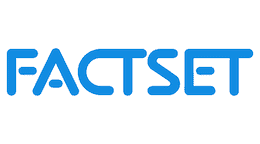
Rob Watts, head of equity business development, trading solutions, FactSet
Where is FactSet leading the market in execution management?
Rob Watts: We lead the market in multi-asset trade automation, working with many of the largest and most complex buy-side trading operations to achieve a very high standard of efficiency. We see automation as being the number one reason for asset managers evaluating new EMS technology and this applies to a wide cross-section of the market. Automation is not simply about basic algo-wheels and small-scale order routing but considers the entire trade process and the opportunities for efficiencies on a high-volume desk, including many traditionally high-touch processes. We are essentially replicating all manner of data, liquidity and timing-based decisions of the trader, at scale.
Is automation a threat to traders’ roles?
Watts: It’s quite the opposite. It removes the mundane, focuses skillsets and frees up time for greater engagement with portfolio managers. Traders know they need consistent, structured, un-biased and data-driven decision-making and this is exactly what sophisticated automation provides.
Traders’ roles and skillsets have changed over the years – they are highly technical and analytical. They see how the EMS can be a source of advantage and competitive differentiation. They work with us as partners to iteratively increase the sophistication of processes, to achieve improved results and efficiency. The trading desk’s value and contribution to portfolio performance is always top of mind.
Where else does an EMS add value?
Watts: In all wish-list surveys, you’ll see flexibility featured at the top. It’s important that the technology can support each individual client’s workflows, preferred data and analytics, decision making process, internal and market communication needs. There is a spectrum of complexity and scale in this market but interestingly, each client we work with has their own unique process and ambitions for leveraging their EMS. If the technology successfully supports that, then it’s invaluable.
Where does AI fit into the equation?
Watts: FactSet was an early mover in the AI/ML space and so we have some significant insight as to the potential as well as challenges that such technology offers. Indeed, FactSet has a dedicated cognitive computing team, leveraging AI, ML and NLP, to bring pertinent content and insight to a user’s attention. Certainly, the volume of data and scope of variables facing traders lends itself to the power of machine learning and predictive analytics, however there is still an inherent need to understand the logic of the system. For many firms that have not yet adopted much in the way of automation on their trading desk, the idea of jumping straight to the use of AI is missing a step. They have many benefits to realise from non-AI automation logic.
Those asset managers that do have the budgets, expertise and very high degrees of automation have in many cases developed proprietary ML based optimisation solutions. They have done this as a source of competitive advantage and to control the development and science behind it.
Where is FactSet focussing its efforts for traders?
Watts: FactSet is investing heavily in EMS technology upgrades, which includes a front-end rewrite and back-end re-architecture. This investment is important for the delivery, usability and upgradeability of the EMS. Using web technologies and cloud native architecture takes us forward significantly. This investment is a real statement of intent and commitment to our clients – future-proofing our technology and enabling enhanced capabilities.
We work with some incredibly progressive traders, execution analysts and technologists, so the feedback we get is core to our product strategy. A particular area of focus is trade analytics. The EMS is at the centre of execution decision making, so all data, insight and decision support should be there front-and-centre and context sensitive. Traders also need immediate access to summary data and time-series reports empowering them for wider stakeholder engagement.
More broadly, FactSet has made considerable investments in its front-office capabilities – particularly in the portfolio lifecycle from risk & performance-centric portfolio management, through compliance, order management and execution management. We believe that asset managers want to simplify their technology relationships, consolidating and extending with trusted partners that are capable of adding value across a wide spectrum of their business. That said, we maintain an ‘open and flexible’ philosophy and have made our technologies and data sets API accessible via the FactSet Open Marketplace, so that ‘best-of-breed’ is well-supported.
Outsourced trading – what’s FactSet’s view?
Watts: Outsourced trading is not a new concept and while there has been a lot of promotional noise in the last year, each firm will review this on its merits, considering service model, asset class and markets coverage, expertise, cost, engagement with fund managers, and most importantly, the execution performance. Will it deliver significantly better results than a standard agency broker relationship?
Certainly, it is hard to see portfolio managers at larger firms being convinced that they will see greater levels of access, market expertise, collaboration and knowledge of their portfolio strategy by outsourcing. There are also going to be lingering concerns about priority in volatile markets and regulatory obligations.
If the costs and value of a trading desk are being scrutinised, then EMS technology can be put to good use, to deliver incredibly efficient automated trading processes and ensure that in-house traders have the time to provide high standards of service to PMs and contribute to overall portfolio performance.
The trillion-dollar club – what are the implications of the race for scale?
Watts: The concentration of the market in fewer, larger firms is an inevitable evolution of the market, driven by the cost pressures caused by passive funds. The M&A deal-making in the last few years has shown that scale, global coverage, and breadth of products are goals many firms are chasing.
Every trading desk is looking at their level of efficiency across asset classes and capacity to increase volumes, so the ability to replicate sophisticated execution decision making processes at scale is incredibly important.
Any head trader who is part of a merger will want to be able to represent that they have their EMS technology and analytics dialled-in and ready for the demands of the expanded business.
